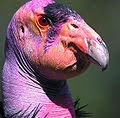Ngrams from Google is all the addictive rage these days, simply checking written word usage over the last couple centuries in all sources Google has catalogued. So of course had to check out "Ivorybilled Woodpecker":

Surprised though to find that, in spite of the last 5 years, "Passenger Pigeon" still blows the IBWO away:

-----------------------------------------------------------------




